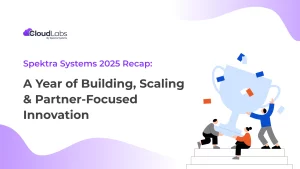Fast-moving technology and the latest updates enable organizations to stay at the top of their game. However, they also need to be in sync with the real world, collaborate with industry stakeholders, and keep up with the latest trends.
‘Virtual events’ is one such recent trend that saved organizations from going downhill when physical interactions were rendered redundant by the Covid pandemic. Today, all major conferences, events, marketing workshops, and training programs are conducted online, without having to spend a dime on travel and accommodation.
As per Marketing Charts, a marketing data and analytics company, 68% of B2B marketers say that virtual events generate the most leads. If conducted efficiently, virtual events can lead to exponential brand reach, better product awareness, and higher conversions.
Apart from the continuity of communication and networking, virtual events have numerous other benefits over the traditional in-person events, saving costs being the most significant. This is followed by flexibility, ease of allowing more registrations, smarter analytics, and better chances of feedback.
In this blog, we will delve deeper into virtual tech events and the technology required for hosting them. These technologies can help you hit the bull’s eye and garner the targeted ROI per event for your business.
What are virtual tech events?
Virtual tech events have come to save the day for the global IT industry. They are now the most effective and feasible windows of interactions and engagement with clients and prospects in the IT sector. Technical workshops, sales training programs, webinars, and online hackathons, each of which plays a crucial role for the IT industry, are conducted virtually from remote locations instead of flying to physical venues across the globe!
Here are some of the various forms of virtual events:
- Virtual hackathon
A hackathon is like a codefest, or a design sprint event organized by tech companies, where professionals from software programming, coding, designing, and other fields related to IT come together to work on projects.
The word ‘hackathon’ is derived from the words ‘hacker’ and ‘marathon,’ where hacker refers to clever programmers who help solve problems, and marathon refers to an event or a competition. Hackathons can run anywhere from 24-72 hours. There can also be mini hackathons lasting up to only a few hours.
The concrete ideas generated from these hackathons pave the path for next-gen product designs, enhanced customer experience, and an increase in ROI.
Moreover, online hackathons are also organized to team up talented individuals to solve real-life problems. Like-minded individuals come together, brainstorm ideas, and generate prototypes for a viable product or tool. The best idea wins the competition.
How hackathons work
Big organizations regularly host hackathons to bring about innovative solutions while also scaling their businesses with increased API adoption.
For example, PayPal regularly hosts hackathons around the world. One such event is the BattleHack contest organized in 14 cities, attracting top developers to work their charms using the PayPal API to solve local problems in 24 hours.
One of the projects was based on helping puppies in shelters. The participants developed an app to connect users directly to puppies available for adoption in shelters and raise funds through PayPal for their treatment.
Tips for Organizing a hackathon
- Decide purpose
Having a crystal-clear goal is necessary for the success of your hackathon, whether it is about crowdsourcing innovative ideas for an existing problem at hand, or to build new technology by collaborating with a large group of talented individuals gathered from all over the world.
Organizations around the world are hosting hackathons at a large scale either to increase their API adoption, for marketing outreach, to generate collaboration among employees or to drive innovative solutions to overcome real-world complications.
To ensure the success of your hackathon, make sure the goal, theme and the outline of the entire event is effectively conveyed to the participant, leaving no room for confusion. Pre-planning and structured guidelines are the best ways to achieve this goal.
- Identify the theme
It’s necessary to have a theme or central idea in place. This typically consists of selecting a problem and encouraging ways to solve it with software development, coding, machine learning and other technologies incorporated during the online hackathons.
- Encourage inclusivity and diversity in participants
The main goal of a hackathon is to generate a wide range of innovative ideas for a project. A great way to do this is by ensuring diversity in participants and encouraging participation from talented professionals and young aspirants from different domains all over the world.
- Selecting the right platform
The adoption of virtual or online hackathons are on the rise owing to their widespread reach, success, and high ROI. However, the success of these hackathons solely depends on the effective collaboration among participants.
This requires a robust platform, that supports interactivity, hands-on virtual workshops that run parallel to a hackathon, and safe environments for project building or testing.
Online technical workshop
A technical workshop is a means to educate your audience about your product or software with hands-on practical training, wherein attendees work along with the instructor to practice the given assignment.
Data from Markletic, a martech research platform, indicates that nearly 80% of virtual event attendees participate for educational purposes. And 57% of organizers leverage virtual events for educating and engaging with their audience.
Apart from educational purposes, attending workshops is a great way to gain exposure, interact with like-minded people, derive inspiration from latest industry trends and above all, build new professional relations.
Tips for organizing a virtual tech workshop
It is necessary to identify your primary goals at the planning phase of a workshop. It can either be educational, for increasing product awareness, or any other goal. You must also fulfil certain criteria to successfully execute the marketing agenda of your technical workshop.
- Proper planning
Start with deciding the right topic for your workshop. Make a structured outline of your presentations, content, agenda and key takeaways for your attendees.
For a technical workshop, investing in the right equipment, tools and technology is a big deciding factor for a smooth experience. One must keep backup plans ready in case of technical glitches, faulty equipment, or poor internet connections. Also, select the right audio and video devices to maintain steady engagement throughout the session.
It is particularly important to have the right technical configurations in place for virtual technical training workshops. Getting the prerequisites right saves a lot of time and effort. Select a platform that is easily accessible for remote users, has minimum onboarding time for attendees, and eliminates the hassles of cloud trials.
- Practical learning
This is another key aspect of technical workshops. Your audience has gathered primarily to gain knowledge and learn something new. Share your years of experience and valuable insights via hands-on practical experience using the right technology.
- Make space for networking.
A deciding factor in the success rate of a virtual workshop is the engagement level of the attendees. To attract your audience’s attention, you must make opportunities for interaction and networking during the event. The best way to achieve this is by creating break-out sessions, chats, polls, and breaks where attendees can interact and build connections.
- Virtual Conferences and Webinars
Webinars are short virtual events running on limited time, typically 2 hours or so and have a narrow focus limiting to a single topic. Although webinars provide excellent exposure and marketing opportunities, organization leaders need to take a step further to expand their marketing outreach to a wider demographic dispersed globally.
Right where the capabilities of webinars come to a halt, we see the endless opportunities that virtual conferences can bring.
They run on a course of multiple days, hosting a range of events like keynotes, leadership sessions, tutorials, networking opportunities, virtual booths, training bootcamps and so much more.
The key idea behind webinars, virtual conferences and every other virtual event is to promote interaction and engagement among the host, panel speakers and audience.
The major success of any virtual event is determined by a positive customer response,rate of interaction during the event, lead generation and ROI generated through the event.
To ensure this, event hosts must consider investing in the right virtual event platform that delivers a seamless experience with a range of features, integrations and tools.
Cloud Technology has brought some major revamp in the event industry. See how investing in the right platform for virtual events distinguish your event delivery from a mundane, presentation style online meeting that holds very less scope for engagement.
CloudLabs for technical events
It is safe to say that Cloud technology covers almost every field today, and virtual events are no exception. CloudLabs can change the way you host virtual events.
See how you can improve user experience and get higher ROI with CloudLabs and CloudEvents– a cloud-based event platform.
- On demand hands-on labs
- Get simulated environments to deliver impactful training during workshops and events.
- Use hands-on experiences to showcase your product’s core capabilities with an unforgettable experience that generates leads and creates a pipeline of prospects.
- Encourage participation, boost interactive learning, and spark curiosity amongst the audience with real-life scenarios replicated in simulated environments.
- Users’ skill validation and progress tracking
- See training effectiveness instantly with skill-validation.
- CloudLabs provides ‘Shadow Labs’ to closely monitor your students’ lab environments.
- Track your users’ lab progress and provide guidance in real-time.
- Use practice tests that provide a thorough evaluation for every user.
- Optimized Cloud Spend
CloudLabs allows you to control lab costs.
- Manage your users’ resource consumption with the ‘Lab Uptime’ feature.
- Automatically shut down VMs (virtual machines) as per the decided lab uptime to save costs.
- Customizable alert mechanism to control usage and track consumption.
- Multi cloud compatibility that supports Azure, AWS and GCP
CloudLabs supports multiple cloud platforms like Azure, AWS, and Google (GCP) to enable seamless operations. Get hands-on with leading Cloud providers of your choice with CloudLabs.
5.CloudEvents– cloud-based event platform
CloudEvents is a single platform that helps you integrate Cloud Technology while hosting virtual events.
- Scalable- Get on-demand labs instantly while hosting the event as per the requirements.
- Multi-track capabilities- Save time by hosting multiple tracks simultaneously under a single event and give liberty to the attendees to choose the track based on requirements.
- Easy Resource Management-CloudLabs provides an intuitive mechanism that makes it easy to purchase, configure and validate various cloud resources from one place.
- Engagement and interaction- Breakout sessions with MS Whiteboard take an interactive approach to how collaboration is done. Discuss ideas, resolve queries, or host lectures that create interest
Virtual events require a great deal of planning and execution, make sure your efforts are well reciprocated by the audience. Invest in technology that yields desired results, sets the bar high with an unmatched experience, and helps you establish a brand for your organization.
Experience CloudLabs with its full functionality.
This blog was originally published on CloudLabs.




















